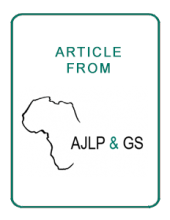Land Library Search
Through our robust search engine, you can search for any item of the over 73,000 highly curated resources in the Land Library.
If you would like to find an overview of what is possible, feel free to peruse the Search Guide.
/ library resources
Showing items 100 through 108 of 832.The livelihoods of hundreds of millions of people, particularly the rural poor, are based on secure and equitable access to and control over land and natural resources which are in turn the source of food and shelter, the basis for social, cultural and religious practices, and a central factor in
Urban centres emerge, develop and expand. In the course of development or expansion, housing development on hilly landscapes may be more challenging than on relatively flat or flat terrains, forcing developers not to comply with building standards.
Zimbabwe has been experiencing a rapid rate of urbanization amidst a failure by conventional approaches of urban land management to cope with the demand for housing.
In the early 1990s to date, the private sector has continued to gain momentum in urban planning and service delivery. Among others, the penetration of neo-liberal ideology in policies and legislations empowered the engagement of private sector in urban planning domain.
As the urban land use plan is a tool for urban land governance, this paper explores customers’ expectations that the service providers have not considered as the quality during urban land use plan preparation in Amhara Region - Northern Ethiopia.
Rwanda has undertaken a land registration and titling program since 2008 with a registration of 10.3 million land parcels in 2013.
Despite a comprehensive regulatory framework on land matters, compulsory land acquisition in Tanzania has been associated with complaints and delays in compensation payments an indication that good governance principles might not be under serious consideration.
Uganda’s total population is projected to increase to 61 million by 2040 in the rations of 37million (60%) to 24million (40%) in the Urban to rural areas respectively.
The irrigation process is old and its dynamic has moved towards the promotion of small village irrigated areas where the involvement of producer’s production is more important. The establishment of business management and supervision entities has been a success.

